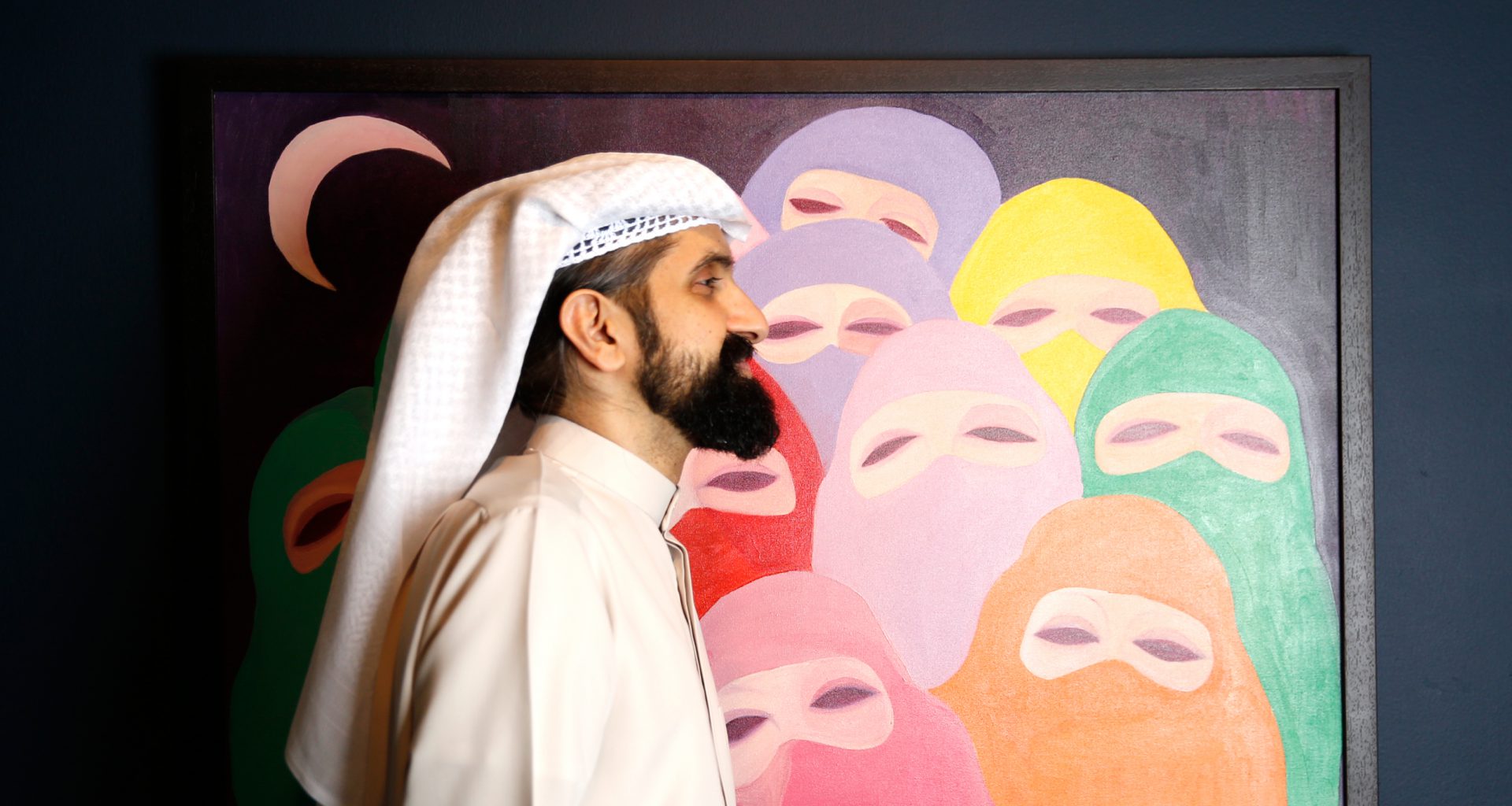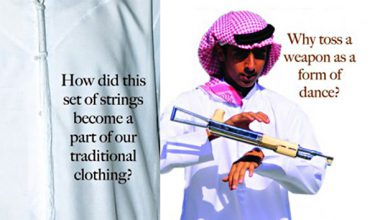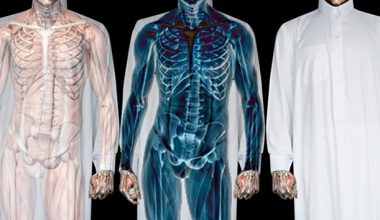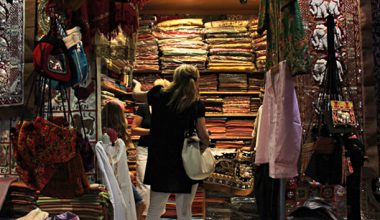Sultan Sooud Al-Qassemi is well known for his presence on Twitter, mainly as a political and social commentator on current Arab affairs. However, the Emirati national is also an avid art collector and founder of Barjeel Art Foundation. Sultan deems himself a guardian of the foundation’s art collection and purchases artwork to tell a historical narrative of the Arab region. The collection is from Arab artists, including those abroad. The art foundation is only six years old but is considered to be one of the most active organizations in the Middle East for loaning art internationally. Having loaned to prestigious organizations such as the Institut du Monde Arabe in Paris, the Serralves in Portugal, and the New Museum in New York; Sultan is fast on his way to achieving his vision of telling the historical narrative of the Arab world globally.
With Sultan having such a busy schedule it wasn’t the easiest assignment to schedule an interview with him. Out of three writers, I finally succeeded in landing the interview, but it was well worth the wait. He is a silver-tongued, down-to-earth gentleman who just happens to exude intellect in every shape and form. He articulates himself as eloquently verbally as he does in writing; his boyish charm making him seem younger than his 38 years of age. I discussed with Sultan his choice of artworks that have a political significance, how he takes pleasure in pushing boundaries by maneuvering around censorship laws in the Gulf, and the importance of supporting female artists.
Reham Al-Awadhi: What elements do you look for before adding a piece to your collection?
Sultan Sooud Al-Qassemi: I don’t consider this to be a personal collection. I consider it to be a collection for the public and therefore when I buy artwork, I have to make sure that it resonates with the public, that it can be displayed, that it can be loaned, and that it is historically significant. These elements take precedence over my personal preference to an artwork.
What is your reason for doing this?
I’m interested in the historical narrative of the Arab world, whether it is political, social, or artistic. I’ve been writing for many years; commenting about the Arab world and I feel like art is a neglected element. There are a few collections of Arab art but they are not as public; they are not as ready to be loaned internationally.

Since you try to look for art with historical significance, does this change based on what’s currently happening in the region?
Definitely. The collection itself has evolved a lot and of course, major regional events like the Arab spring, and the civil wars that have taken place, have impacted the collection itself. With that said, the collection has also evolved with time. It has become more modern. It has become more gender balanced. It used to be more biased toward male artists and now there’s a healthy gender balance, which is very important.
Do you think it was gender biased because of a lack of female artists?
No, it was gender biased because the market was not conclusive to female artists. There was less scholarship about art by female artists,; the auction houses would not include as many artworks by females, and galleries would not have as many female artists. There is, I hesitate to use the word “conspiracy,” but there was a very clear bias to male artists, unfortunately; although there are many female artists who are equally good, if not, even more important than most male artists. It actually reflects my ignorance in the early days of collecting.
In this region censorship is a very prominent topic, what’s your opinion on it when it comes to art?
I’m against any form of censorship but I think artists from the Arab world have taken the censorship in stride. They have used it to the best of their abilities by making their work less overt and more covert; by using symbols and metaphor; and by being subtle about their political references. I think it’s really adding an edge to the artworks. I think it’s more challenging, it’s more fun, and it reflects very well on these artists that they’ve managed to navigate this very complex censorship world that they have to operate within.

How do your own political or religious views affect your approach to the censorship here?
I’m against all censorship; I think artists should produce whatever they want. I don’t bring in my political, or my religious bias, or lack thereof, to collecting the art. I collect art in a secular manner, just as I live my life. But, depending on the countries these artists live in, there is more or less political or religious influence, so I have to collect within that frame. Having said that, the political and religious context means that you have to read and educate yourself prior to buying the artwork because sometimes, because of this political framework that artists operate in, the most interesting artworks are the most subtle. There could be an artwork about horses, and this is a true story; horses crying, and that artwork, in fact, is a very political work. Although at face value it looks just like a landscape with animals on it.
Have there been any obstacles that you’ve faced where you’ve tried to loan an artwork to a certain region that wasn’t very accepting of whatever controversy was surrounding that work?
(Sultan seemed most excited to answer this question in particular) Yes, so we had an institution here in the Gulf that didn’t want to take two artworks, one for religious reasons and one for what they say were ‘subtle sexual references.’ It depicted some sexual organs in a very abstract manner. I feel that because I explained the artwork to the host institution, they realized what it was and they didn’t want to take it, but had I not explained it, I would have been able to get away with it, which I did in other organizations. So it’s always a lot of fun, I have to say. (He said with a smirk.)
What are your views on the culture and art scene in the U.A.E?
I think it’s a very vibrant scene. I think it’s one of the only scenes in the Middle East that has an entire ecosystem built around it. I have very little to say that is critical, except for the fact that it’s very difficult to obtain licenses for non-profits. Another thing is, I feel the visa process is becoming very restrictive for artists across the Arab world and I hope that they ease up on the visa process here in the U.A.E so that we don’t miss out on a lot of the talent.

Do you wish the government offered more support?
I think because I am financially secure, I can survive without the support. I would like the government to give the support to others. If there was a system for applying for grants, that would be amazing. Even if I don’t qualify for it, but someone else does, then I’d like to see that happen. I’d like someone else to benefit from that.
Do you feel like The Louvre and The Guggenheim being built in Abu Dhabi will develop or hinder the art scene in the region?
I’m a big fan of homegrown brands, but having said that, I feel that the advent of an institution like The Louvre and The Guggenheim will only benefit art in the Gulf because it will elevate the standards of art practices in the region.

What are your views or how well do you think other GCC countries are establishing themselves as artistic and cultural hubs?
I think of course the pioneering hubs are Kuwait and Bahrain. Kuwait being the site of one of the first public art exhibitions in the Gulf. It has had an art museum since 2003, although I feel there’s a lot of room for improvement in that art museum. Bahrain is also a pioneering city when it comes to the Gulf. Qatar has been carrying the mantle for art with regards to exhibitions, museums, and collections; they have the biggest collection of Arab art, with over 8,000 artworks. Saudi Arabia looks like it’s moving forward with the opening of the King Abdulaziz Center for World Culture, so there is a healthy art movement in the Gulf.
If someone were trying to make a living as an artist, what advice would you give him or her?
I would say that they can begin their careers with having a full-time job and doing art on the side, but because we’re on the cusp of change, it’s becoming easier to be a full-time artist, although it's not yet financially feasible. I would also tell them that they would have to invest in their minds. Read, interact, meet, interview, and mix with artists; not to isolate themselves too much, and if they do shun socializing then they have to invest in reading. Unfortunately, many artists don’t read and that’s why you have a repetition of ideas in the Gulf, and it’s only when artists can read and educate themselves that they come up with interesting ideas.
Images taken by Rahab Al-Majed.








1 comment
Could you please share who the painting behind Sultan is created by?